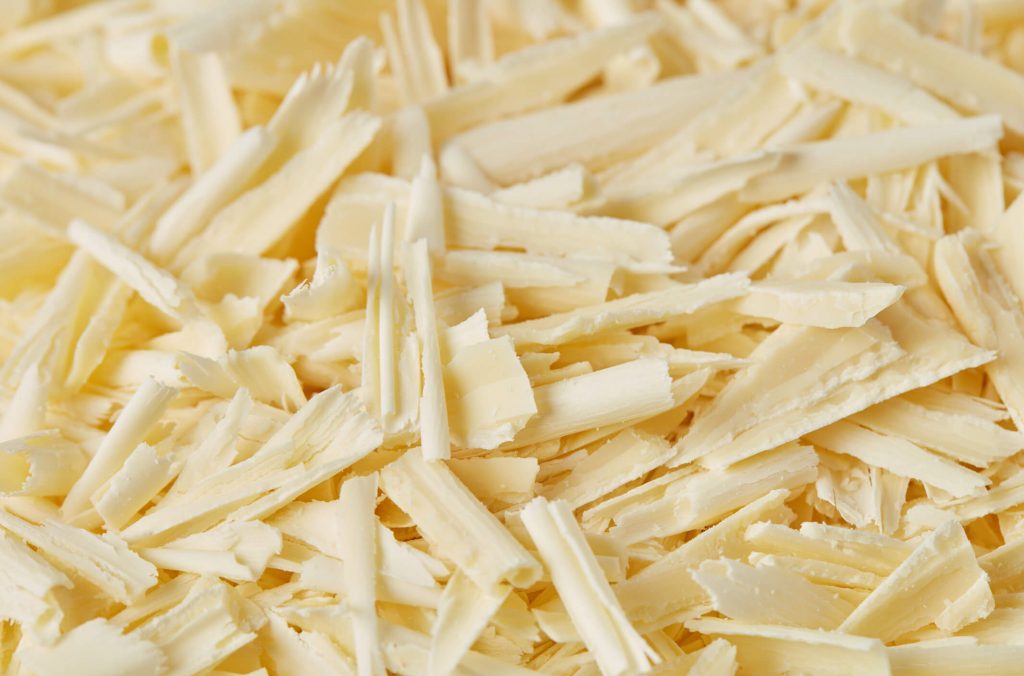Few confectionery lovers have any idea how white chocolate is made and that it is closer to chocolate in name than in composition.
White chocolate appeared relatively recently: the first bar was cast in 1930 by the Swiss concern Nestlé, which was looking for a way to consume the overproduction of cocoa butter. The company’s new product caused mixed feelings among consumers – some refused to recognize it as full-fledged chocolate and did not bode well for its success. However, 90 years later, white chocolate still has a large group of admirers. But how is it made and why is it white? Does it, like other chocolates, bring benefits to our body?
What are the differences between various types of chocolate? The cocoa powder content, of course:
In terms of health benefits, white chocolate is much worse than those varieties that contain cocoa. This is where the most valuable nutrients are concentrated.
If there is no cocoa in white chocolate, then what is? According to an official EU directive from 2000 (Directive 2000/36/EC), it should contain the following ingredients:
Products based on vegetable oils and other fats are considered cheap counterfeits. It is the cocoa butter in the composition of white chocolate that allows it to be called chocolate. And it is to its processing that it owes its light, sometimes slightly yellow color.

The main ingredients that are used to make white chocolate, besides cocoa butter, are:
Milk. Initially, whole milk was used to prepare the product. A little later, it was replaced by dry with the addition of some milk fat. This helped to reduce production costs.
Sweetener. Its presence is a mandatory condition, and unfortunately it is this ingredient that causes harmful properties of the product. In most cases, the role of sweetener is played by sugar.
Flavors. The most popular is vanillin. It is used more often than others for a simple reason: it is a natural, relatively inexpensive ingredient that gives white chocolate its characteristic taste and aroma.
Unfortunately, not all manufacturers take into account the standard introduced by law and often save money in the production of white chocolate. As a rule, instead of sugar in the composition there is a cheap substitute, and instead of cocoa butter there are trans fats. White chocolate of low quality (light white color and intense sweet taste) even in small quantities can do much more harm to health than good.
The properties of white chocolate depend largely on how often and in what quantity it is present in the diet. Due to its high calorie count of 540 kcal per 100 grams it is recommended that we eat it in moderation. The high nutritional value of the product is due to the content of:
These values may vary depending on the manufacturer. Unfortunately, most of the mentioned fats are saturated compounds, which if consumed in large quantities can harm us.

In addition, in white chocolate we can find small amounts of saturated fatty acids omega-3 and omega-6, vitamins A, E, D, K, B, folic acid and potassium, phosphorus, iron, magnesium and calcium. However, these values are not high enough to talk about benefits for the body.
Certainly white chocolate contributes to the improvement of mood, because during the consumption of sweets in the body is produced serotonin, or the hormone of joy. It is a kind of mood and behavior regulator, and its presence in the body has a positive effect on the work of the central nervous system.
The trace amounts of beneficial ingredients in white chocolate mean that its regular consumption can do more harm than good. Of all chocolates, it is the white one that lacks the nutritional and health benefits of cocoa powder because it does not contain it.
Another problem is the high amount of sugar, which destroys tooth enamel and causes tooth decay. White chocolate in the daily diet has a negative impact on metabolic processes, promotes the development of heart disease and is especially dangerous for diabetics.
Consuming it in large quantities may have a harmful effect on the condition of our skin. It is possible to develop an allergic reaction to cocoa butter, which manifests itself as a rash and redness. The vascular system also suffers: blood flow is slowed down, blood pressure increases, tachycardia or impaired vision can occur and blood circulation in the extremities is disrupted.
Finally, excessive consumption of white chocolate can lead to weight gain and obesity.
White chocolate pales in comparison to its competitors, which are definitely healthier for our bodies thanks to the cocoa powder content. Therefore, if we must reach for something sweet, let’s do it consciously and with head.
If you are interested in the topic of healthy food, read also about which ingredients it is better to avoid.